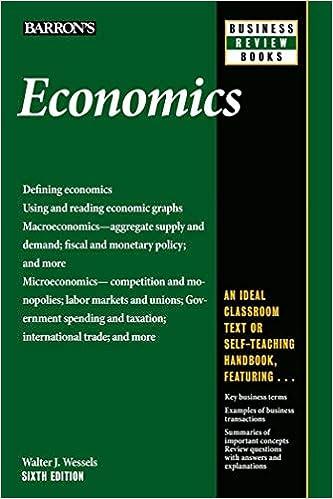This problem presents a crude real business cycle model that focuses on the labor market. All households
Question:
This problem presents a crude real business cycle model that focuses on the labor market. All households are alike and have 3,000 hours a year available for working (L) or household time (H). Each hour of labor pays a sufficient wage to allow the worker to buy one unit of consumption good C. Consumption good C is combined with a half-hour of home time to create household output Z. (For example, C could be purchased food, which when added to cooking time equals a meal, Z.) Each unit of Z effectively takes one hour of work time plus one-half hour of household time.
a. How many hours will people work? What is the real wage? What is per capita C and Z?
b. A technological shock increases the productivity of work time such that one hour of labor produces two consumption goods.
What will happen to work time, real wages, per capital C and Z?
c. A technological shock increases the productivity of home time such that only one-quarter hour of time is needed to change C into Z. (We are returning to the original case where one hour of L produces one C).
d. Work hours and output move together over the business cycle.
Which of the two cases better match this result?
Step by Step Answer:






